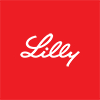
LLY
Eli Lilly ($LLY) Executives Launch Buying Spree, Investing Millions During 21% Stock Plunge
08/12/2025 20:58
Sentiment
C-Level
Summary
- Eli Lilly executives conducted concentrated buying during August's 21% stock decline, with leadership from CEO to directors investing millions in personal funds, signaling strong conviction
- Q2 results showed 37.6% revenue growth and 61% EPS surge, leading to raised 2025 guidance, with Mounjaro and Zepbound delivering 68% and 172% sales growth respectively
- While stock declined on obesity drug competition and clinical concerns, insider buying suggests current price significantly undervalues intrinsic worth
POSITIVE
- Large-scale share purchases by CEO and key executives demonstrate strong management conviction
- Q2 revenue grew 37.6% with EPS surging 61%, maintaining strong earnings momentum
- Key growth drivers Mounjaro (+68%) and Zepbound (+172%) showing explosive growth
- Raised 2025 revenue and EPS guidance reflecting management confidence
- Industry-leading profitability with 86.29% ROE and 45.81% operating margins
NEGATIVE
- High leverage risk with debt-to-equity ratio of 217.89%
- Negative levered free cash flow indicating cash outflows after capex and debt service
- Intensifying competition in obesity drug market and disappointing orforglipron clinical results
- Continued decline in legacy products Humulin and Humalog sales
- Premium valuation burden with trailing P/E of 41.52x
Expert
From a healthcare sector perspective, Eli Lilly's executive buying represents a highly positive signal. Management's strong conviction despite obesity drug market competition concerns reflects confidence in long-term growth prospects. However, high leverage and intensifying market competition require continued monitoring.
Previous Closing Price
$1.04K
-38.92(3.60%)
Average Insider Trading Data Over the Past Year
$660.25
Purchase Average Price
$910.02
Sale Average Price
$500.47K
Purchase Amount
$4.06B
Sale Amount
Transaction related to News
Trading Date | Filing Date | Insider | Title | Type | Avg Price | Trans Value |
|---|---|---|---|---|---|---|
01/06/2026 | 01/06/2026 | Sale | $ |
Eli Lilly's ($LLY) executive buying spree during August's sharp selloff has caught investors' attention, with leadership from CEO to board members stepping in to purchase shares just as the stock plummeted 21% in a single month. This coordinated insider buying signals strong management conviction that the current share price significantly undervalues the company's fundamentals. Eli Lilly, founded in 1876 and headquartered in Indianapolis, Indiana, is a global pharmaceutical giant employing approximately 47,000 people. The company develops innovative medicines across diabetes care, oncology, immunology, and neuroscience. Recent explosive growth in obesity drug Zepbound and diabetes treatment Mounjaro has positioned Lilly at the forefront of the industry's most lucrative market segments. **Unusual Executive Buying Timing Sends Strong Signal** The most notable transactions occurred on August 8th and 12th. Director Jamere Jackson purchased 200 shares at $639.56 on August 8th, while August 12th saw a flurry of executive purchases: President David Ricks bought 1,632 shares ($1.05M) at $644.77, EVP Daniel Skovronsky acquired 1,000 shares ($634K) at $634.40, and directors Erik Fyrwald and Gabrielle Sulzberger purchased $1.56M and $75K worth respectively. This buying occurred precisely as shares crashed from $812 in late July to $625 in early August. Such coordinated executive purchasing at this scale is extremely rare and typically indicates management views the current price as severely undervalued relative to intrinsic worth. **Fundamentals Remain Robust Despite Market Concerns** Q2 2025 results provide substantial backing for management confidence. Revenue surged 37.6% year-over-year to $15.56 billion, while EPS jumped 61% to $6.31, both beating consensus estimates. Key growth drivers Mounjaro and Zepbound delivered exceptional performance with sales increases of 68% ($5.2B) and 172% ($3.38B) respectively. Based on these strong results, the company raised full-year 2025 guidance: revenue to $60.0-$62.0 billion (from prior $58.0-$61.0 billion) and EPS to $21.75-$23.00 (from prior $20.78-$22.28). Profitability metrics remain industry-leading with ROE of 86.29% and operating margins of 45.81%. **Understanding the Selloff and Recovery Prospects** August's sharp decline primarily stemmed from heightened competition concerns in the obesity drug market and disappointing clinical trial results. The oral obesity treatment orforglipron's Phase 3 results fell short of market expectations, while intensifying competition with Novo Nordisk and FDA crackdowns on compounded drugs added uncertainty. However, industry analysts suggest these concerns are overblown. TD Cowen raised its price target to $1,050, noting "sustained growth momentum in core franchises." JP Morgan maintained its $1,100 target, expressing confidence in long-term growth prospects. **Key Investment Considerations** Lilly's current valuation appears reasonable with a forward P/E of 28.82x and PEG ratio of 0.95. The company's strong position in the estimated $150 billion annual obesity treatment market through Zepbound and Mounjaro provides significant growth runway. Risk factors include high debt-to-equity ratio of 217.89% and negative levered free cash flow, requiring careful monitoring of financial health. Additionally, declining sales in legacy products Humulin and Humalog could pressure future growth. Nonetheless, the unprecedented executive buying suggests current prices fail to reflect the company's intrinsic value. When CEOs and key executives invest millions of personal funds, it transcends routine option exercises or scheduled transactions. **Conclusion: Attractive Entry Point with Measured Approach** Lilly's situation represents a convergence of solid fundamentals and strong management conviction. August's selloff has significantly improved the stock's attractiveness, while coordinated insider buying suggests limited further downside risk. However, ongoing competition in obesity treatments and regulatory changes remain variables to monitor. Investors should carefully track Q3 results and pipeline developments while considering a phased approach to position building in this compelling long-term growth story.